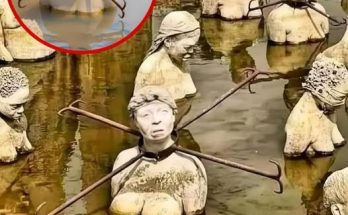Ramesses II, also known as Ramesses the Great, was the son of Pharaoh Seti I and Queen Tuya. As the third pharaoh of Egypt’s Nineteenth Dynasty, he is widely regarded as one of the most powerful and influential rulers in ancient Egyptian history.

Ramesses II was not only the most famous and powerful pharaoh of the New Kingdom, but he also symbolizes the height of ancient Egypt’s power and glory. His reign marked the zenith of Egypt’s imperial dominance, and his successors referred to him as “The Great Ancestor,” underscoring his lasting influence.
In Greek sources, he is known as Ozymandias, derived from the Greek transliteration of a part of his throne name, *User-maat-re Setep-en-re* (“Chosen One of Ra”).
Ramesses II led numerous military campaigns, particularly southward into Nubia, to secure Egypt’s borders and influence. These expeditions are documented in inscriptions found at Beit el-Wali and Gerf Hussein, which celebrate his military prowess and expansion of Egyptian territory.

During the early years of his reign, Ramesses II concentrated on ambitious building projects, constructing cities, temples, and monumental structures that solidified his legacy. One of his most significant achievements was the founding of the city of Pi-Ramses in the Nile Delta, which he established as his new capital. Pi-Ramses became a major political and military hub, serving as the base for his military campaigns, particularly those in Syria.
Ramesses’s path to the throne began early, as he was appointed prince regent by his father, Seti I, at the age of fourteen. This early responsibility allowed him to gain experience and authority, laying the groundwork for his later successes as one of Egypt’s greatest pharaohs.

Ramesses II is believed to have ascended the throne as a teenager and ruled Egypt for an extraordinary period, from 1279 to 1213 BC. His reign lasted for 66 years and 2 months, a remarkable feat that made him one of the longest-reigning pharaohs in Egyptian history.
The ancient Egyptian historian and priest Manetho recorded the length of Ramesses II’s reign, and most modern Egyptologists agree that he ascended the throne on May 31, 1279 BC. This lengthy reign allowed Ramesses II to leave a profound mark on Egypt’s history, through his military conquests, monumental architecture, and lasting legacy.

Estimates of Ramesses II’s age at death vary, but it is generally believed he lived to be around 90 or 91 years old. Throughout his long reign, he celebrated thirteen or fourteen Sed festivals—more than any other pharaoh. The first of these festivals took place after he had ruled for 30 years, with subsequent festivals occurring every three years, a symbol of his enduring vitality and authority.
Ramesses II was originally buried in a tomb in the Valley of the Kings. However, his mummy was later moved to a secret royal burial site for safekeeping, which was discovered by archaeologists in 1881. Today, his mummy is housed and displayed at the Egyptian Museum in Cairo, offering a direct connection to one of ancient Egypt’s most iconic rulers.

In 1975, French doctor Maurice Bucaille examined the mummy of Ramesses II in the Cairo Museum and found it to be in poor condition. Afterward, French President Valéry Giscard d’Estaing persuaded the Egyptian government to allow the mummy to be sent to France for restoration.
In September 1976, Ramesses II’s mummy arrived in France, where it was met at Paris-Le Bourget Airport with full military honors, befitting a king. It was then transported to the laboratory at the Musée de l’Homme in Paris, where extensive restoration work was carried out to preserve the ancient pharaoh’s remains.

The mummy of Ramesses II was forensically examined by Professor Pierre-Fernand Ceccaldi, the chief forensic expert at the Criminal Identification Laboratory in Paris. After a thorough analysis, Professor Ceccaldi made a fascinating discovery regarding the pharaoh’s appearance. He determined that Ramesses II had red hair and was likely a person with “cymnotriche leucoderma,” a term that refers to light skin with wavy, red hair. This finding provided further insight into the physical characteristics of one of ancient Egypt’s most iconic rulers.
Artificial intelligence has been used to recreate the appearance of Egyptian pharaoh Ramesses II (1303–1213 BC), bringing the ancient ruler’s features to life once more.
Microscopic examination of Ramesses II’s hair roots confirmed that his hair was originally red, suggesting that he came from a family with red hair. This discovery holds both physical and historical significance. In ancient Egypt, people with red hair were often associated with the god Set, the adversary of Osiris, and the name of Ramesses II’s father, Seti I, translates to “disciple of Set,” further linking the king’s lineage to the god.
After undergoing irradiation to eliminate fungi and insects, the mummy of Ramesses II was returned from Paris to Egypt in May 1977, where it remains a key piece of Egypt’s ancient heritage.



